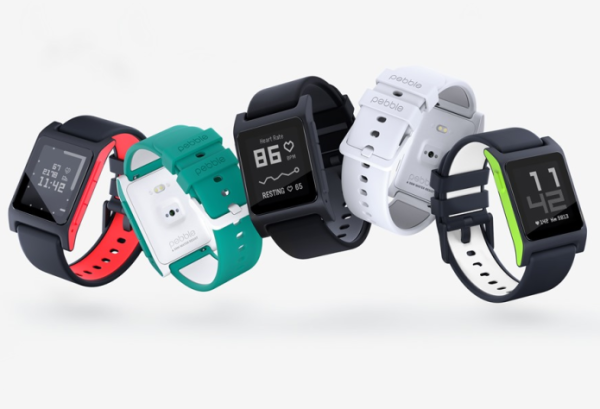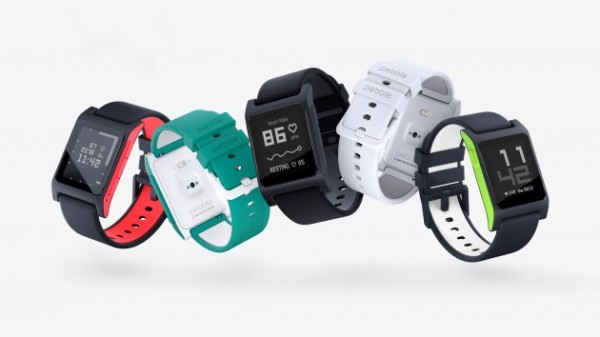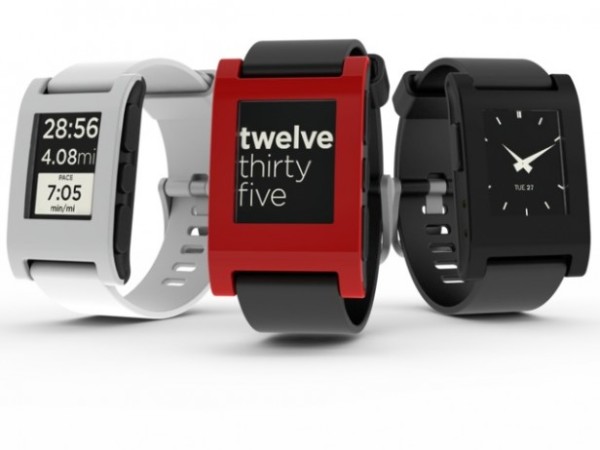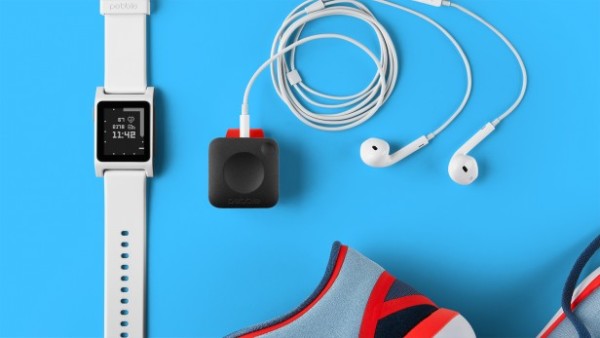PEBBLE 2 VS PEBBLE – WHAT’S THE DIFFERENCE?
The original Pebble is about as close as a smartwatch gets to being a bit of history. Released in 2013 the original Pebble was, and in many people’s minds, remains one of the best-value-for-money smartwatches around. This is a key reason it’s still being sold by loads of big retailers, including Currys, Tesco and Argos for as little as £60/$90.
Some people may justifiably question if they should bother upgrading to the company’s newly unveiled smartwatch, the Pebble 2 (pictured above). Fortunately if you look beneath the surface at the Pebble 2’s specs and features, if opening impressions are anything to go on, there are plenty of reasons.
We created a definitive list detailing how the Pebble 2 compares to its predecessor.
DESIGN
When the first Pebble was released, smartwatches were a young device category that hadn’t quite figured out what it was meant to do. As a result the first Pebble launched with close to no fitness tracking features out of the box. Instead it focused on offering reliable notification alerts and cross-platform iOS and Android support.
This was fine back in the day, but devices like the Fitbit Blaze and Apple Watch have since shaken up the market and made it so buyers now expect the smart-time piece to offer sleep and fitness tracking features.
The original Pebble (pictured above) is still a pretty swish looking wearable
Aware of this, Pebble’s added a wealth of new features to the Pebble 2, designed to make it the “ultimate fitness smartwatch”. The biggest of these is the addition of a heart rate monitor to the Pebble 2 , which radically improves its usability as a fitness tracker.
The absence of a heart rate monitor on the original was a big problem that made it an inappropriate choice for more hardcore users that wanted to accurately track their progress during training and optimise their workouts.
Pebble’s also worked to make it more rugged and has coated the Pebble 2’s screen with an anti-scratch, Gorilla Glass 3 coating. This is another small but important improvement, as the original Pebble’s screen was horribly prone to scratches.
Interestingly, despite the wearable focus the Pebble 2 isn’t as water resistant as its predecessor. The Pebble 2 can survive being submurged at a death of up to 30 meters. Its predecessor could swim in depths of up to 50 metres. In reality, though, you probably won’t be using it for deep-sea diving so this shouldn’t be much of an issue.
There’s no built-in GPS, though, which means, like its predecessor, it may not track distances quite as accurately as competing dedicated fitness trackers.
BATTERY
Battery life is a constant issue on many of the smartwatches we test. Despite efforts and upgrades to Android Wear, most Google powered smartwatches struggle to last more than two-to-three days before needed a charge. Which is why we’re pleased to see the Pebble 2 has the same seven-day quoted battery life as its predecessor.
TRACKING AND SOFTWARE
The Pebble 2 runs an upgraded version of the Pebble OS originally released on the company’s first smartwatch. This means out of the box the Pebble 2 will be able to run 13,000 apps, including RunKeeper, Pebble Health, Uber and TripAdvisor.
PRICE AND RELEASE DATE
The Pebble one launched with a fairly hefty £100/$150 price in the UK. The company hasn’t confirmed UK pricing yet. But if its US $99 price follows the current exchange rate it will be cheaper and cost around £60-£70/$90-$105. This could make it one of the best value fitness watches around when it starts shipping in September.





